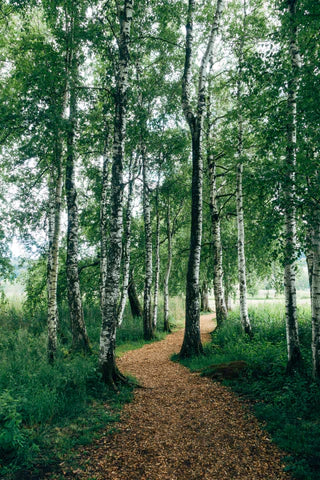
- Article published at:
- Article author: Valerie M. Malla
- Article comments count: 0
There is something undeniably magical about autumn — a quiet shift that calls us out of our routines and back into presence. The air cools, the light softens, and nature begins to paint with deeper colours, inviting us to slow down ... breathe differently ... and engage with the world in a more playful, appreciative way.
... Autumn is not just a transformation of the landscape ...... it is an invitation to reconnect with our inner world...
Play: Rediscovering Wonder Through Nature
As leaves trade their greens for fiery golds, rusts, and crimsons, the world becomes a canvas that feels made for play!Autumn awakens the child-soul — the part of us that still remembers how to jump into raked piles of leaves, toss them into the air, or walk pathways just to hear that perfect crunch beneath our feet.
Autumn play is not only physical; it can be imaginative, sensory, and deeply creative:
Foraging for fallen treasures: acorns, feathers, pine cones, and smooth river stones
Pausing to watch birds gather, squirrels store, and winds carry
Trying new cozy hobbies — candle-making, journaling, herbal teas, wood-fire cooking
Going on slow, unscheduled walks with no destination
Appreciating the coupling of little animals whose tiny broodlings will make their appearance come springtime
... Play becomes an act of freedom ...... a small rebellion against the rushed world ...
Appreciation: Slowing Down to Truly Notice
Autumn offers a unique form of beauty: not the vibrancy of spring’s beginnings, but the reverence of graceful change.It teaches us that transformation can be gentle, graceful, and breathtaking — even when it is a form of release.
We are reminded to appreciate the simple things:
The texture of knitted sweaters
The smoke-sweet scent of firewood
Warm mugs held between chilled hands
The golden-hour light that arrives earlier each day
The deep quiet of fog-wrapped mornings
... Nature becomes a meditation, guiding us back into gratitude ...
Personal Connection: Hearing the Whisper Beneath the Season
Autumn has a way of speaking to the parts of us that crave meaning.There is an instinctive pull toward deeper reflection, memory, and self-awareness — as though nature’s soft decay mirrors our own inner transitions.
We may feel more intuitive, more reflective, more open to journaling, dreaming, and emotional clarity.Autumn encourages us to:
Let go of what no longer serves
Honour what we have learned
Prepare our hearts for what will come next
... Where summer is outward and expansive, autumn turns us inward ...... not in isolation, but in tenderness ...... it reminds us that letting go can be beautiful ...
Reflection ...
Autumn is not merely a season; it is an experience — one made of colour, curiosity, warmth, and wisdom. When we approach it with playfulness, appreciation, and personal connection, we enrich not only our relationship with nature, but with the quiet, steady rhythm inside ourselves.
Take a walk ...Open your senses ...Let autumn show you who you are becoming ...Embody the relaxation and alignment between nature and your inner spirit ... allow yourself, gently, to become one ...
Learn More









